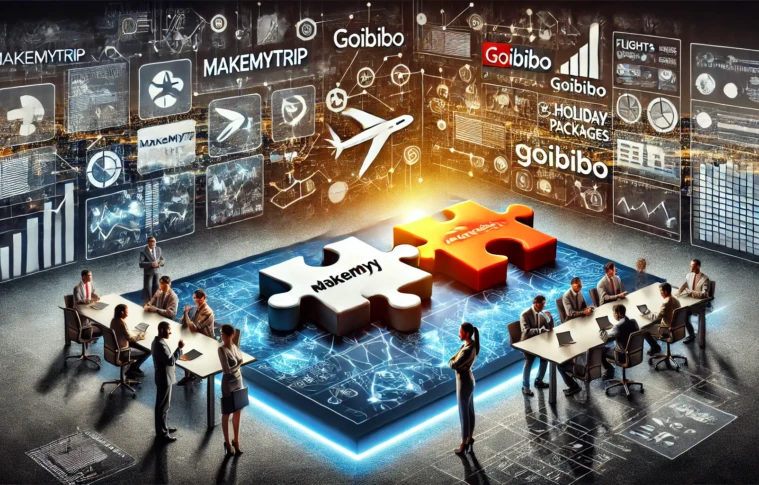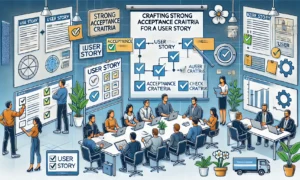Introduction: The Need for Strategic Consolidation in the Travel Industry
The Indian online travel industry has undergone significant consolidation in recent years, with MakeMyTrip (MMT) and GoIbibo, two major players, merging to create a dominant entity in the market. The merger was driven by the need to strengthen their market position, offer enhanced services, and compete against global giants like Expedia and Airbnb.
From a product management perspective, this merger presented both challenges and opportunities. Merging two well-established platforms requires careful handling to minimize disruption for employees and customers while ensuring that the combined entity offers a superior, seamless user experience. This case study explores how product managers can leverage the benefits of the merger to provide maximum customer advantage with minimum disruption.
Identifying the Key Stakeholders and Challenges
The primary stakeholders in this merger were:
- Customers: Existing users of both platforms, accustomed to their respective interfaces, features, and benefits, were the most important consideration. A smooth transition and continued trust were paramount.
- Employees: Employees across both companies needed to be aligned with the new organizational structure, ensuring minimal disruption to internal operations.
- Shareholders and Investors: Maintaining financial stability and growth expectations while executing a successful merger strategy.
- Vendors and Partners: External stakeholders, such as hotel chains, airlines, and payment providers, also needed to be integrated into the merged platform without disrupting their relationships.
Key Product Management Takeaway: In any merger, it is essential to identify and address the needs and concerns of all stakeholders, balancing both external customer-facing changes and internal operational changes.
Streamlining Product Portfolio and Features: Consolidating Offerings for Maximum Impact
The merger of MakeMyTrip and GoIbibo necessitated a review of their product portfolios. Both platforms offered similar services, including flight bookings, hotel reservations, holiday packages, and car rentals. The product management teams needed to carefully evaluate which features from both platforms should be retained, improved, or discarded.
To minimize customer disruption, the focus was on:
- Unified Branding and User Experience: A unified user interface (UI) and user experience (UX) were critical. The merging of two platforms that already had loyal customer bases required careful consideration of the UI/UX design. A gradual, phased approach was taken to avoid overwhelming users with a completely new interface. For example, maintaining the GoIbibo app’s popular design, while incorporating MMT’s superior backend for booking accuracy, helped maintain continuity.
- Consolidating Core Services: Both platforms had strengths in different areas (e.g., GoIbibo had a strong foothold in budget travel, while MakeMyTrip catered to higher-end travel services). The product teams combined these strengths into a broader, more comprehensive offering, ensuring that customers could access both affordable and premium services without friction.
- Building a Single Backend System: Instead of maintaining two separate systems, the product teams worked on consolidating backend operations to streamline the process of bookings, cancellations, and customer support. This backend integration required careful planning to ensure that customers experienced no interruption to their service during the transition.
Key Product Management Takeaway: During mergers, aligning product offerings and ensuring a seamless user experience requires collaboration across design, tech, and customer service teams to create a consistent and unified platform.
Managing Data Integration and Privacy: A Key Consideration for Product Managers
One of the most complex and critical elements of any merger is data integration. Both MakeMyTrip and GoIbibo had extensive user data, including personal preferences, travel history, and payment information. Merging these data sets without compromising customer privacy or creating confusion was a top priority for the product teams.
To address this:
- Data Migration and Syncing: Product managers had to ensure that user data from both platforms were successfully merged and that customers were seamlessly transitioned to a unified system without losing personalized data, such as past bookings or preferences.
- Security and Privacy: Given the sensitive nature of travel data, it was essential to prioritize cybersecurity and data privacy during the merger. Transparent communication with customers about how their data would be handled helped maintain trust.
- Customer Communication: Clear communication about how their data would be handled, any changes to the system, and how customers could continue to use their profiles across both platforms was necessary to prevent confusion or dissatisfaction.
Key Product Management Takeaway: Data integration in a merger is a delicate process that requires balancing innovation with a strong commitment to user privacy and security. Clear and proactive communication is essential.
Minimizing Employee Disruption: Aligning Teams and Building a Unified Culture
On the internal side, one of the biggest challenges in the MakeMyTrip-GoIbibo merger was managing employee transitions. Both companies had established cultures, and integrating these teams required a clear strategy to avoid internal disruptions.
- Cross-Company Training and Integration: To ensure that employees from both platforms could collaborate effectively, product managers organized cross-company workshops and training programs. These were designed to introduce employees to the merged product vision, the new tools, and operational practices that would be implemented.
- Change Management Strategy: Product managers worked closely with HR teams to ensure smooth transitions for staff. This included understanding the organizational structure and ensuring the right talent was placed in the appropriate roles, minimizing redundancies, and fostering collaboration between teams.
- Unified Culture and Vision: Aligning the teams with a common purpose and vision was key to ensuring minimal disruption. Building a unified organizational culture centered around innovation, customer experience, and collaboration helped to unify the workforce during the merger.
Key Product Management Takeaway: Internal alignment and employee engagement are crucial to ensuring smooth operations during a merger. Product managers should facilitate training, change management, and cultural integration efforts to maintain productivity.
Addressing Customer Concerns: Retaining Trust and Satisfaction
One of the most important factors in a successful merger is ensuring that customers continue to trust and engage with the brand. For MakeMyTrip and GoIbibo, ensuring a positive customer experience throughout the merger was vital.
- Seamless Transition for Customers: By ensuring that customers could easily transition to the merged platform without losing access to their booking histories, loyalty points, or existing services, the product teams were able to minimize frustration. Features from both platforms were integrated gradually, so users did not feel overwhelmed by a major change.
- Ongoing Communication: Keeping customers informed about updates, new features, and any changes to policies was key. Proactive communication through app notifications, emails, and in-app banners helped to keep customers aware of the ongoing process, which reduced anxiety and confusion.
- Customer Support Integration: Integrating the customer support systems from both companies and training agents on the new processes and systems helped maintain customer satisfaction throughout the transition.
Key Product Management Takeaway: Customer-centric communication, personalized support, and maintaining service continuity are crucial to retaining customer trust during periods of organizational change.
Conclusion: Strategic Mergers for Long-Term Product Innovation
The merger of MakeMyTrip and GoIbibo demonstrates the importance of strategic product management in driving successful consolidations. By carefully managing stakeholder interests, streamlining product offerings, integrating data systems, and maintaining clear communication with customers and employees, the merger not only minimized disruptions but also maximized the potential for future growth and innovation.
For product managers, the key takeaway is that successful mergers require a balance of internal operational efficiency and external customer satisfaction. With careful planning, clear communication, and a focus on user-centric solutions, companies can leverage mergers to create better products and deliver greater value to their customers, all while navigating the challenges of consolidation.
Disclaimer
Posts in the Notebook are written by individual members and reflect personal insights or opinions. Please verify any information independently. If you have any concerns, notify the admin immediately so we can take action before any legal steps are taken.





